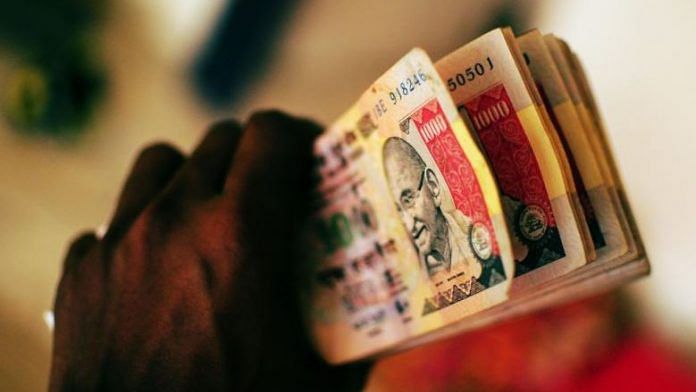New Delhi: Fake Indian currency notes worth Rs 28.1 crore were seized in 2017, almost doubling from the previous year’s mark of Rs 15.9 crore, according to the Crime in India-2017 report put together by the National Crime Records Bureau (NCRB).
The report points out that the new Rs 2,000 note, released after the November 2016 demonetisation, accounted for Rs 14.97 crore of the currency seized in 2017.
The total number of notes seized were 3,55,994, a 26 per cent rise from 2016, when 2,81,839 fake notes were seized. Of these, there were 65,731 old Rs 1,000 notes, 1,02,815 were old Rs 500 notes, 8,879 were new Rs 500 notes and 92,778 were Rs 100 notes.
While announcing demonetisation on 8 November 2016, Prime Minister Narendra Modi had said the move would fight black money, corruption and terror funding. He said the old Rs 500 and Rs 1,000 notes would no longer be legal tender, and would just be “worthless pieces of paper”. The PM had also urged people to “join this mahayagya against the ills of corruption”.
However, the NCRB report says the country’s banks received an all-time high amount of fake currency. The report, added that banks detected an over 480 per cent jump in suspicious transactions post-demonetisation.
Also read: Demonetisation and GST broke the Indian economy’s back, says Raghuram Rajan
How states & union territories fared
A state/union territory-wise analysis showed that Gujarat topped the list with fake currency worth over Rs 9 crore seized. This was followed by Delhi (Rs 6.7 crore), Uttar Pradesh (Rs 2.8 crore) and West Bengal (Rs 1.9 crore).
A total of 2,272 counterfeit Rs 2,000 notes were seized over 53 days, with Gujarat accounting for 1,300 of these notes.
In 2016, Delhi had accounted for over Rs 5.6 crore worth of fake currency, followed by Gujarat (Rs 2.37 crore) and West Bengal (Rs 2.32 crore).
The most number of FIRs connected to fake currency were registered in Uttar Pradesh (181), followed by West Bengal (146), Maharashtra (75) and Gujarat (71).
Factors behind India’s fake currency problem
Asked about the reasons behind the increase in fake currency in India, Madan Fadnavis, chief economist at CARE Ratings, told ThePrint that a lot of it has to do with how the government introduced new currency notes at different stages as well as the new colours.
However, N.R. Bhanumurthy, professor at the National Institute of Public Finance and Policy, felt this could be seen as a positive outcome of demonetisation, as at least now one is able to distinguish fake notes from genuine ones.
“Although it is still not clear whether the Rs 10 coin is considered fake or will be considered valid or not, since it’s not universally applicable across the country yet,” Bhanumurthy said.
Also read: Economists call for new approach to rejuvenate agro-economy ‘hit by GST, demonetisation’
Note: The data recorded in the latest NCRB report is from calendar year 2017, which means the figures and statistics are from 1 January 2017 to 31 December 2017.







One by one, all the justifications for Demonetisation – some advanced after the event – are falling by the wayside.
Very true. But bhakths will believe in anything Modi says. If Modi had claimed that demonetisation was needed to get an erection, bhakths would have believed in that too !!